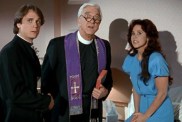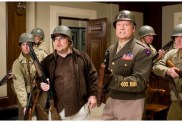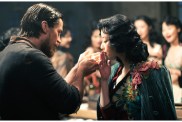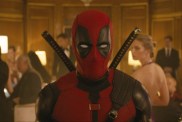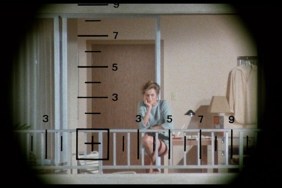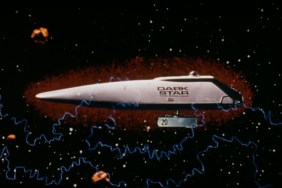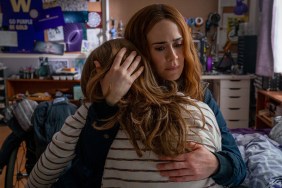
It was as if Jason Zinoman had uncovered horrors Da Vinci Code, the genres undiscovered artifact thats secretly been responsible for so much thats come after it.
In early 2010, the New York Times writer was hard at work on Shock Value: How a Few Eccentric Outsiders Gave Us Nightmares, Conquered Hollywood, and Invented Modern Horror, his meticulously reported examination into how Wes Craven, John Carpenter, Tobe Hooper, George A. Romero, and Brian De Palma permanently changed the horror landscape in the late 1960s and early 70s. One of Zinomans focal points was Dan OBannon, Carpenters friend at the University of Southern Californias film school whod go on to write Alien (1979) and write/direct Return of the Living Dead (1985). After extensive interviews with Zinoman, OBannon passed in December 2009 from Crohns disease. Zinoman attended the genre legends memorial; while there, OBannons widow, Diane, told Zinoman about a box of old 16mm films made by OBannon over the years, which shed found in a closet. Diane gave Zinoman two of the films, both of which OBannon had made during his days at USC: Blood Bath and Judsons Release, the latter directed by OBannons film school buddies Terence Winkless (whod later co-write Joe Dantes The Howling) and Alec Lorimore (whos now an Oscar-nominated documentary producer).
Zinoman knew about Blood Bath, since, during his interviews for Shock Value, Carpenter had told him about how it was seeing Blood Bath during class one day that prompted him to befriend OBannon, thus beginning a working relationship thatd culminate with Carpenters feature film debut, Dark Star (1974), which then led to Alien. But Judsons Release, made in 1971, was an entirely new find. Renting out a screening room in New York City that could play 16mm films, Zinoman sat down in the empty theater and let Judsons Release play. Over the course of the next 15 minutes, he watched a series of now-popular horror tropes transpire. Theres a babysitter alone inside a house, and shes seen from the shaky-camera point-of-view of a killer (played by OBannon) from outside the window; theres a prank phone call, and eventually the babysitter picks up the phone and hears, The calls coming from inside the house. Just like that, Zinoman had seen the most popular elements of films like Carpenters Halloween and When a Stranger Calls in some of their earliest, most primitive forms.
He quickly reached out to Winkless, who confirmed that Carpenter had worked with him on Judsons Release (pictured top). [Winkless] said, Yeah, Carpenter was there whole time and he stole my idea to make Halloween, recalls Zinoman. There was the missing piece to this puzzle. One of the things I wanted to do in the book was trace the evolution of certain tropes in the horror genre, and certainly if you look at Halloween, that shaky-camera point-of-view that starts Halloween is one of the most widely imitated tropes of all of horror. So where did that came from? To find this new piece of the puzzle was really interesting to me. I thought, okay, I have to make this whole USC world a part of the book.
Flash forward to the summer of 2012. Dino Everett, a film archivist at USC, had known all about Carpenters and OBannons days at his place of employment. Knowing that Carpenters USC legacy had only been identified by the infamous Academy Award-winning western short The Resurrection of Broncho Billy, Everett made it his mission to learn more about the iconic horror directors collegiate output. Hed dug up an old 1969 student film of Carpenters called Captain Voyeur, about a passive office worker who spends his night in costume as a peeping tom. But hed never been able to find a copy of OBannons Blood Bath. Once he got word of Shock Value, Everett read Zinomans book and was taken aback by the section in which Zinoman describes scenes from Blood Bath in specific details. Everett reached out to the author, who then introduced him to Diane Lindley. At her house, I opened up a box full of not only Dan OBannons USC work but also stuff hed made as a teenager, says Everett. That was when I realized, I dont want to be the only person who sees this.

And now he wont be. Having compiled OBannons and Carpenters strongest USC films together, Everett is the brains behind Shock Value: How Dan OBannon and Some USC Outsiders Helped Invent Modern Horror, an 80-minute anthology of sorts that gives genre fanatics the once-in-a-lifetime opportunity to watch the early films that directly led to Alien, Halloween, The Thing, The Fog, and The Howling. Its made up of five films including Blood Bath, OBannons 8-minute short about a man who casually commits a gruesome suicide; Good Morning Dan, a futuristic 19-minute drama that marked Carpenter and OBannons first-ever in-class collaboration during their freshman year at USC; the aforementioned Judsons Release; and Carpenters 7-minute-long Captain Voyeur.
This weekend, Shock Value will screen at New Yorks Lincoln Center as part of The Film Societys annual Film Comment Selects seriesand if youre in the Manhattan area, you wont want to miss it. You go back and forth while youre watching it, says Everett. At some points you say, Oh, this is clearly a student film, and at other points you recognize that these guys definitely had more talent than the other students. The whole concept of Blood Bath alone shows that Dan OBannon was pretty unique. You get to see these moments where theyre still figuring things out, but theyre also so naturally talented. Adds Zinoman, Its totally a treasure trove for horror nuts.
Genre fans will be especially interested in The Demon, a 19-minute horror short made by their USC classmate Charles Adair, a reclusive southerner who co-wrote the 1997 flick Hemoglobin (originally titled Bleeders) with OBannon. Zinoman considers The Demon, which was made in 1970, to be the first Night of the Living Dead rip-off. It was made right after Night of the Living Dead, he reasons, and theres a black protagonist, whos a woman, and its a zombie movie. Night of the Living Dead is maybe the only thing thats been ripped off more than Halloween. But Adairs film is greatits not just some cheap knockoff. Its really weird and kind of arty.
In order to give Shock Value, in his own words, a retro Creepshow-like anthology vibe, Everett got creative with its unique framing device. At the films beginning and end, as well as in between the shorts, viewers will see clips taken from The Creeps Machine, a 1972 educational film made at the university. It was actually made for grade-school children to try and debunk things they might be afraid of, says Everett. They would show scary shadows on the wall and the filmmaker would turn the lights on and reveal, oh, its just a tree from outside! I used the set-ups from each of those scary moments as the bridge between each short. Luckily I had a print that was beat to shreds, so its all scratched-up. It adds a cool sort of old-school ambiance to the film.
Not only will Shock Values audience feel like theyre watching the most quietly influential horror anthology ever made, theyll also get a firsthand look at how USCs film school was directly responsible for so much of the genres classics and touchstones. Back in the 60s, film schools werent exactly in vogue, nor was it all that respectable to call yourself a horror director, yet the stars greatly aligned in Southern California. At one point, Carpenter even lived with OBannon, Winkless, and Lorimore, which is when they joined forces to make the pivotal Judsons Release, a film that, if you want to be a conspiracy theorist, can be considered the launching pad for both Halloween and Bob Clarks Black Christmas, that other classic slasher movie with first-person POV shots from the killers perspective.
Carpenter worked with Bob Clark on a movie before Clark made Black Christmas, explains Zinoman. It was called Prey, and it never came to fruition. Before Clark died, he claimed that Carpenter stole from him. Im not saying I believe this, but you could say that they talked about a movie that had this POV shot, and then Clark went on to make Black Christmas and used that shot, and that it all traces back to Judsons Release. There are differences, thoughJudsons Release has a shaky-camera shot of a babysitter from outside the house, just like Halloween, whereas Black Christmas has that but with a sorority house, so the Judsons Release-to-Halloween connection is even more direct. Its exactly the same.
Zinoman continues, To some extent, and to give credit to Carpenter, one of his gifts is sponging up ideas and repurposing them with his own aesthetic. He sponged up ideas from OBannon and Winkless and then from Bob Clark and then he made Halloween. You have to remember, he made Halloween quickly, almost by instinct. Its almost like if someone asks you to write a story and finish it within the houryoull end up relying on and drawing from what you know. And I think thats what Carpenter did on Halloween, and thats part of its brilliance. Its so stripped-down and goes right to the primal place. It wasnt made from some overly intellectualized placeit was made by real solid instinct. To figure out where that comes from, you have to look at where Carpenter comes from, and part of his origin story is the connection to all of these people.

Its no coincidence that some of horrors formative works trace back to USC. After all, its where George Lucas began his career as the eccentric who proved science fiction could be turned into box office gold. As a USC student, Lucas made the seminal Electronic Labyrinth: THX 1138 4EB (1967), an inspiring a kind of if he can do it, I can do it mentality that drew aspiring genre filmmakers to the school and was fleshed out into the 1971 feature THX 1138. Because of Lucas, USC was the go-to establishment for young men and women hoping to make the next THX or Star Wars.
One of the things I tried to do in my book was to recreate the time in which these movies were made, says Zinoman. It was a fundamentally different context from the time we live in today. Now, everyone loves horror movies, and you can find plenty of people who respect horror movies and are smart about them; back then, if you were a serious filmmaker, it was hard to find other people who were serious filmmakers and were proud about horror films. So it was exciting for these guys to go to this place where people like Orson Welles and Roman Polanski would come and talk to you in class, and where you had other people who cared about H.P. Lovecraft, horror fiction, and cheesy 50s movies. Its a little bit like if you went to Silicon Valley in the early 80sthe number of people who could really speak the language that Bill Gates and Steve Jobs could speak was fairly small. Thats sort of what it was like for the serious horror people at USC at that time.
While there, Carpenter, in particular, was endlessly inspired. Unfortunately, Shock Value doesnt include all of Carpenters student creations. On the USC campus, Everett has access to an archive of production books, which all student filmmakers must put together whenever they complete a project. One such book of Carpenters is called Lady Madonnaits his thesis film, and only Carpenter himself currently owns a print of it. Everett, whos been able to retrieve a few audio clips from it, considers Lady Madonna to be his Holy Grail. The 22-minute film follows a wayward young woman who ends up at a convent, where Dan OBannon plays a priest andget ready for thisshes raped by a bat. Everett describes Lady Madonna as a drama with a crazy The Birds section near the end, and its complete with the earliest incarnation of a vintage Carpenter-made piano score.
But Everett isnt sure if itll ever see the light of day. John wont give it up, he says. I dont get himhes one of my heroes, and, for whatever reason, hes afraid to let people see these student things. And its like, dude, youve already proven yourself. At this point in the game, all we fans want to do is see your entire body of work, especially the stuff you made before you were on top. I tried to approach on a musicians level, where if you have a favorite band, wouldnt you want to hear how Keith Richards played on his demos before the Stones? You want to know how they got to this point, but John doesnt want anyone to see his student work.
Even without Lady Madonna, though, Shock Valuewhich world-premiered on the USC campus last October, with Zinoman, Winkless, Lorimore, and Diane OBannon in attendanceis a must-see for any horror die-hard. Everetts plan is to eventually launch a Kickstarter page to secure the money needed to properly preserve each short film, and then give donors either a Blu-ray or DVD copy of the complete Shock Value film.
Both Zinoman and Everett feel its time for horror lovers to experience a similar Eureka! moment to the one the former underwent inside that empty NYC screening room five years ago. The fact that Judsons Release wasnt on horror fans radars for so long just blows my mind, says Everett. Horror fans can be pretty relentless in seeking things out. Everybody always had copies of the hard-to-find Italian movies, for instancethey always do their homework. But somehow, this one had fallen under the radar until Jasons book. Its like with Lady Madonna: nobodys heard of it because Carpenter has cleverly kept it under wraps. But now with [Shock Value], theyll finally be able to see all of these films that prefaced some of the best horror movies ever made.
—
Matt Barone is a film-obsessed writer who, when hes not contributing to outlets like Complex, The Dissolve, and Badass Digest, endlessly weighs in on all things horror on Twitter.
Shock Value screens at NYCs Lincoln Center this Saturday, February 21, as part of The Film Societys Film Comment Selects. See the full lineup here.
